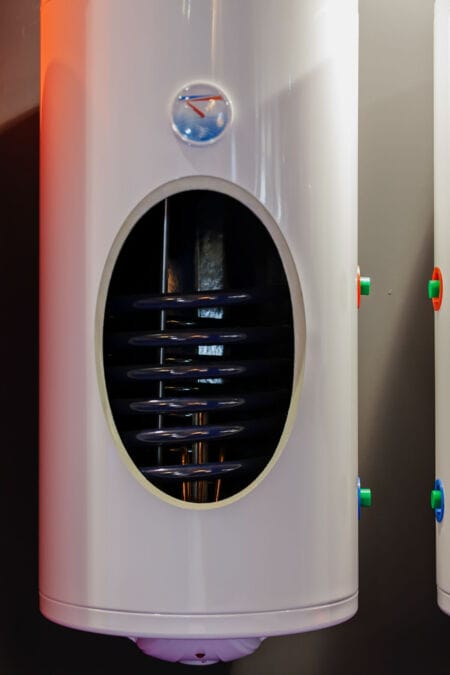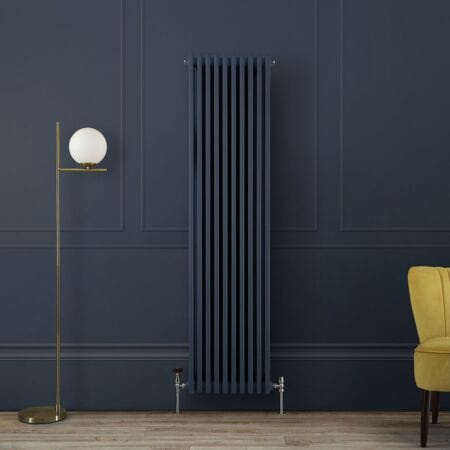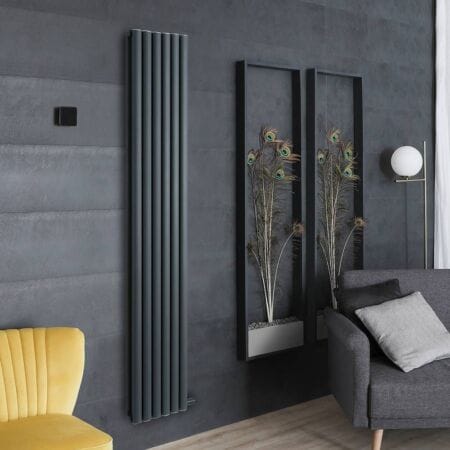Contents
ToggleWhat we'll cover...
What a BTU is, how they can be calculated, and how to decide what sort of BTU output you require for various spaces.
What is BTU and why is it important?
If you’ve ever tried shopping for a radiator, you’ve probably come across the term ‘BTU’ – and if you’re not an engineer or a heating expert, it might seem like just another bit of technical jargon that you don’t really need to know. But trust me, getting your head around BTU is crucial when it comes to keeping your home warm and energy efficient.
BTU stands for British Thermal Unit, and in simple terms, it measures how much heat a radiator can deliver to a space. The higher the BTU rating, the more heat the radiator emits. Pick a radiator with too low a BTU output, and you’ll be shivering in your socks. Go too high, and you might end up turning your living room into a sauna (while wasting energy and money). So, how do you find the perfect balance? We’ll break it down in this article.

How to calculate BTU for different rooms
Each room in your home has unique heating requirements, influenced by size, layout, and how well it holds onto heat. Understanding these factors will help ensure you get the most efficient radiator for your space without overspending on energy bills.
The first step in working out your BTU requirement is measuring the dimensions of your room – length, width, and height all come into play. A smaller space like a compact bathroom or hallway will naturally require far less heat than a large open-plan living area. But size isn’t the only factor that can influence the level of BTU output you need.
Large windows and external walls are notorious for allowing heat to escape, so if your room has lots of glass or sits on the edge of your home, it is likely you’ll need a radiator with a greater output to compensate for the loss. On the other hand, well-insulated homes hold onto heat better, meaning they require less energy to maintain a comfortable temperature.
Rather than relying on rough estimates, you can use an online BTU calculator to get a precise figure tailored to your specific space. Our handy BTU calculator takes all the guesswork out of the process and provides an accurate heating requirement based on your room’s details.
Furthermore, you can see how to preserve energy with the appropriate heat output in our article, High BTU vs low energy use: Can you have both?
Factors affecting heat output: Room size, windows and insulation
A radiator’s performance is influenced by several external factors that can impact its efficiency. Simply choosing a designer radiator with a high BTU rating isn’t always enough – you need to consider how your home retains and distributes heat.
Room size and ceiling height
Larger rooms require more heat to warm up, especially if they have high ceilings that allow warm air to rise. If your space is particularly tall or expansive, a single radiator might not be enough to spread warmth evenly. In these cases, installing multiple smaller radiators may be a better option to create a balanced and consistent heat distribution throughout the room.
Windows and external walls
Rooms with large windows, especially single-glazed ones, tend to lose heat much faster than those with well-insulated walls. If your room has multiple external walls, this can further contribute to heat loss. Placing a radiator beneath a window helps counteract cold air entering the room, but it’s worth considering double-panel radiators or convector models for extra efficiency.
Insulation quality
The better your insulation, the less heat you lose. If you live in an older property with poor insulation, your radiators will have to work harder to maintain a warm temperature. Investing in loft, wall, and floor insulation can make a massive difference in reducing your BTU requirements and improving overall heating efficiency.
Radiator positioning
Where you place your radiator can make a significant difference to how well it heats a room. Positioning it near a cold spot, such as under a window, helps create an effective convection cycle that spreads warm air around the space. However, perhaps obviously, you should avoid blocking radiators with furniture, as this can prevent heat from circulating properly. For more detailed insights, check out our guide on how to position a radiator for maximum heat efficiency.
Choosing the right radiator for maximum efficiency
Once you’ve determined the BTU requirement for your space, the next step is choosing the best radiator to match your needs. While aesthetics often play a big role in radiator selection, it’s essential to prioritise efficiency and functionality to ensure you get the very best heating performance for your home.
Radiators come in a variety of styles and materials, each with its own benefits. Simple single panel radiators are great for smaller spaces with lower BTU needs, while double panel heaters generate more heat and are ideal for larger rooms. If you want a radiator that retains heat for longer, cast iron radiators rate an excellent choice, though they take longer to warm up. Aluminium radiators, by contrast, heat up quickly and are highly efficient, making them a particularly popular option for energy-conscious homeowners.
In terms of shape and style, vertical radiators are a fantastic space-saving solution, especially in modern homes where wall space is limited. Traditional column radiators are ideal for period properties, providing a stylish yet functional heat source that complements classic interiors.
For a more detailed look into a wealth of different heating styles, take a look at the BestHeating radiator buying guide.
Common BTU mistakes and how to avoid them
Many homeowners make the mistake of either underestimating or overestimating their BTU requirements, leading to inefficient heating and unnecessary costs.
One of the most common errors is guessing the BTU requirement rather than calculating it properly. This often results in radiators that are either too small to heat the space adequately or far too powerful, causing overheating and wasted energy. Another frequent mistake is ignoring external factors such as heat loss through windows, doors, and insulation quality. Even if a room’s dimensions suggest a certain BTU output, excessive heat loss could mean you need a more powerful radiator to maintain comfort.
Not so sound too Roy Keane, but choosing a radiator based purely on style rather than functionality is another pitfall. While designer radiators can make a bold statement in a room, they need to deliver the correct heat output to be practical. If you’re opting for a sleek, minimal design, make sure it meets your BTU requirements.
For larger rooms, installing a single high-BTU radiator might not be the most efficient approach. Instead, spreading the heat across two smaller radiators can create a more balanced temperature and eliminate cold spots.
Finding radiators with the right heat output for your home
Now that you have a solid understanding of BTUs, you can confidently select a radiator that meets your heating needs while complementing your interior.
For those with spacious, open-plan rooms, take a look at high BTU output radiators that are designed to provide maximum warmth for large spaces. If you’re working with a smaller or well-insulated area, energy-efficient low BTU radiators offer a practical solution without excessive heat output, particularly when paired with smart radiator valves. Of course, radiator valves can play a significant role in an efficient heating performance.
With the right BTU knowledge, you can heat your home efficiently, save on energy bills, and stay warm all winter long. Be sure to let us know about your BTU-appropriate radiator upgrade in the comments below, or via Instagram, Facebook or X.
John is a Research Specialist for the Best Heating Advice Centre, where for over nine years he has dedicated himself to demystifying home heating for our customers. He specialises in creating clear, data-driven guides and how-to articles by collaborating directly with our team of certified heating experts and product engineers.
His work, built on a foundation of journalistic research, has helped millions of readers make confident and informed decisions about their home heating. When he’s not breaking down the heat output differentials from radiators to heated towel rails, John fancies himself as a fine football and music connoisseur.






